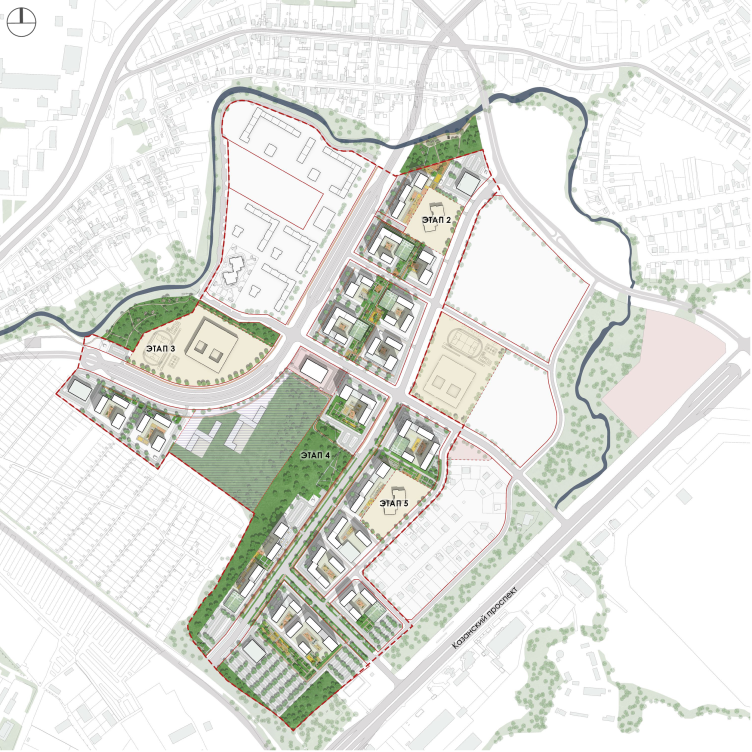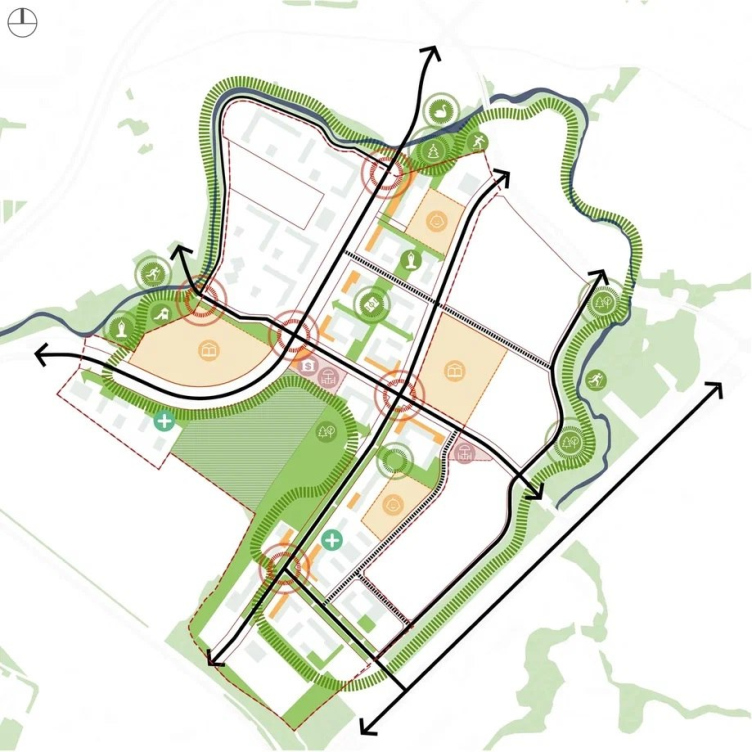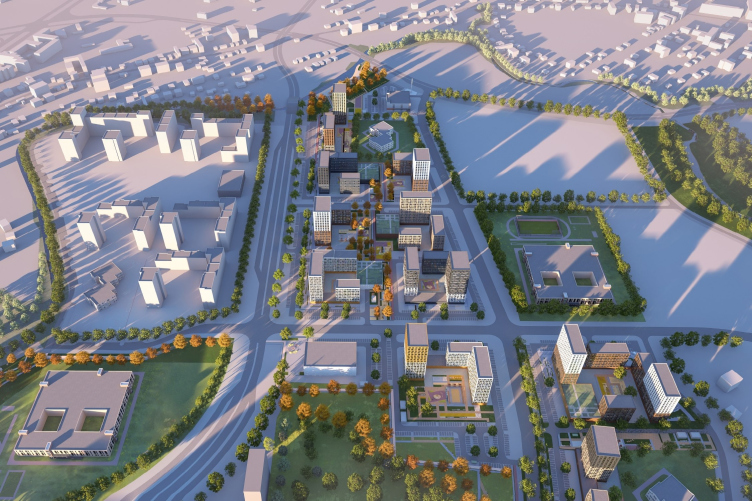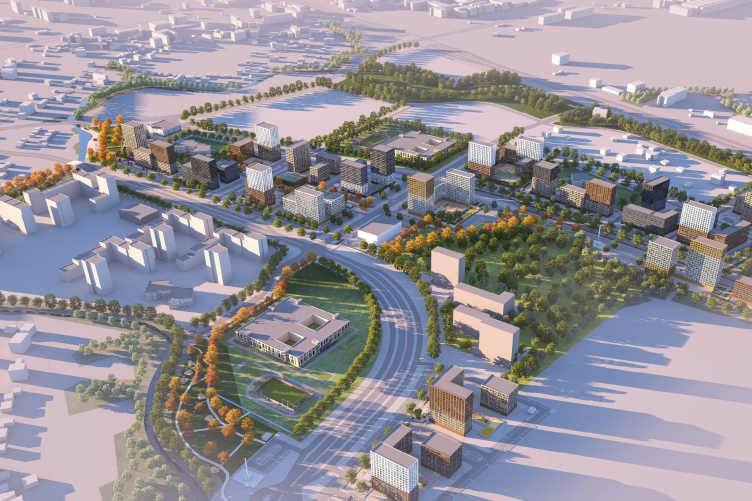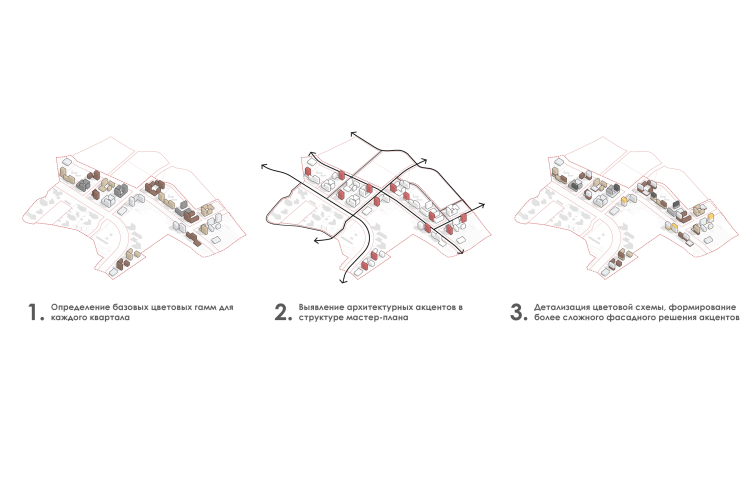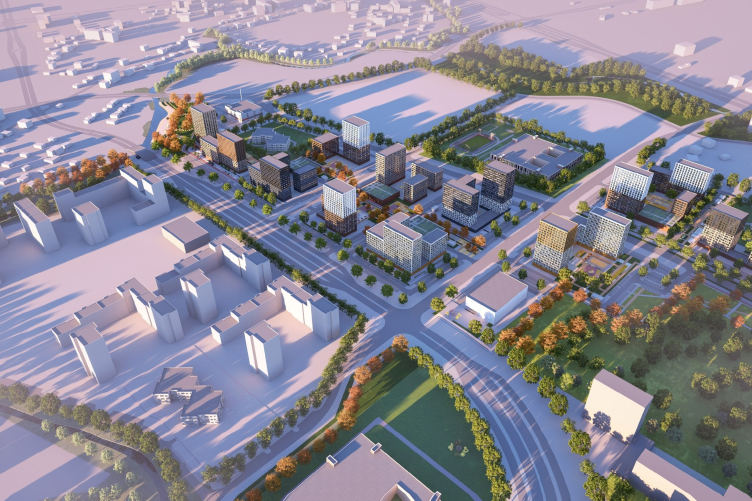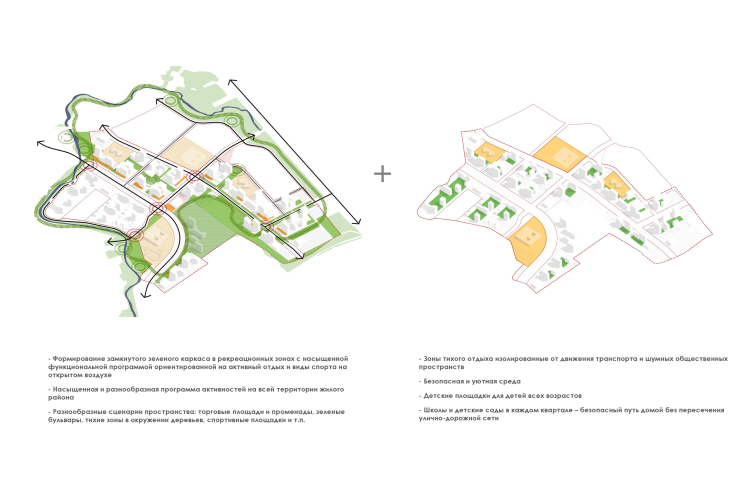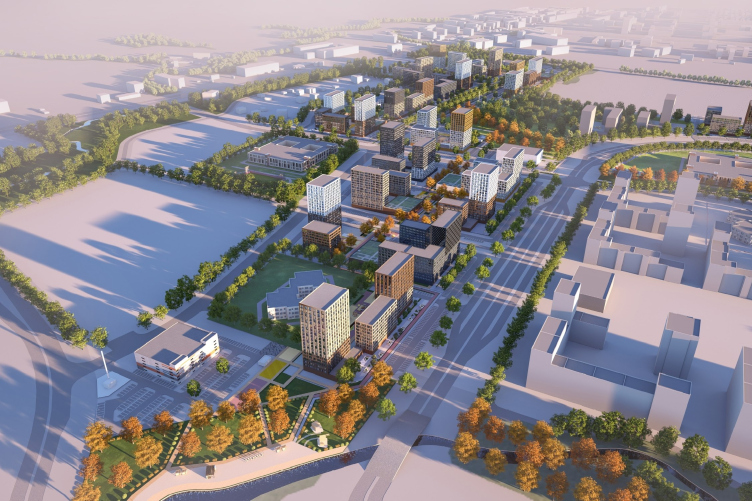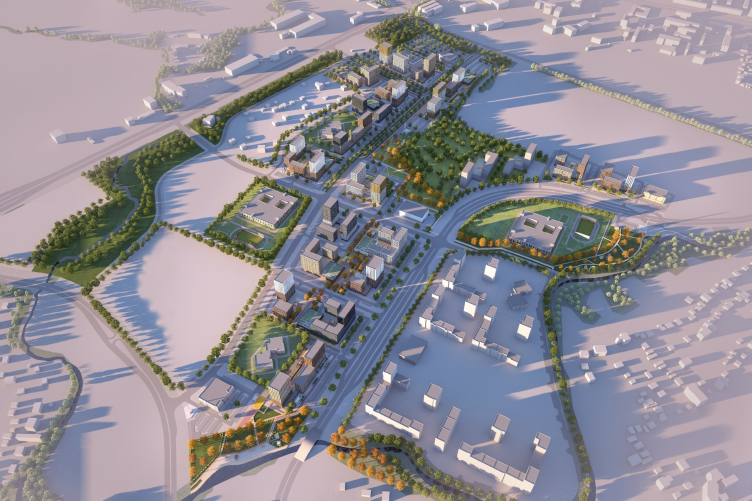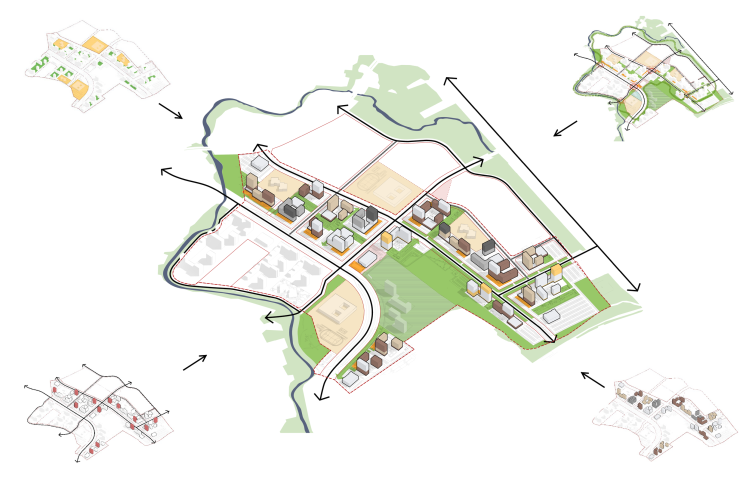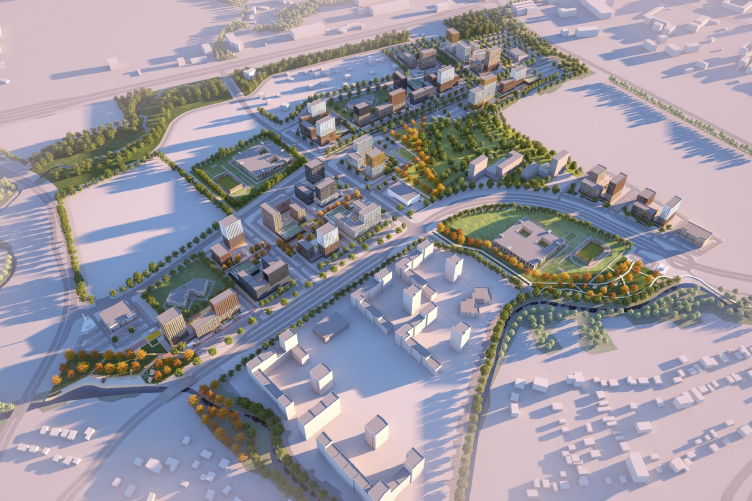On the border of these two worlds, the “Prityazheniye” residential complex is being built. Its territory is outlined by the small Chelna River, whose bends in this area resemble the outlines of ravelins of an ancient fortress, on one side, and by Kazansky Avenue on the other side, alongside a patchwork of garden plots.
A.Len joined the project when the first phase was already actively under construction. This phase is bounded by the extension of Moskovsky Avenue, which here, as if crossing an invisible border, transforms from a straight line into a hook. The master plan focuses on the southeast territory, rethinking the previously approved planning project without altering the avenue’s trajectory and proposing a new development trajectory for the neighborhood.
Crafting a Green Route
The master plan’s key feature is a fully-fledged green framework that permeates the entire development. This framework has an outer ring following the river’s bends and the plot’s boundaries, uniting all routes into a single whole and offering a long promenade with natural landscapes. Within the ring, a main green axis is formed by a pedestrian boulevard, starting from a large park and running parallel to Moskovsky Avenue. This is, by contrast, the liveliest area – a pulsating hub of public activity with cafes, shops, and various venues, hosting all sorts of events.
Each “island” of residential blocks is also enclosed in a green ring and offers its own set of public, semi-private, and private spaces, including retail along the streets, internal pedestrian areas, sports and playgrounds, event squares, and quiet corners for relaxation and slowing down. All the “islands” are interconnected, offering multiple routes and scenarios for daily life, from a short transit through a square to a long stroll along the Chelna River embankment.
The river is an undeniable advantage for any residential area. However, its presence also brings challenges. For instance, in April of this year, the first phase of the complex was flooded.
The area is characterized by challenging engineering, geological and hydrological conditions: it lies in a flood-prone zone with expansive soils prevalent in the region. We’ve encountered similar situations in other Russian cities, and these unfavorable factors were indeed taken into account when we were developing the master plan.
Specific measures to protect the buildings and the area from the potential impacts of these factors are determined during the preparation of the construction project documentation. In “Prityazhenie”, special efforts will be required, including waterproofing the underground parts of buildings, installing subsurface drainage beneath the foundations, and constructing additional protective structures against flooding. The latter, in particularly complex cases, can prove to be a rather costly thing to do.
An essential element of flood protection for the area is the landscaping of the embankments, which is also addressed in our master plan.
Specific measures to protect the buildings and the area from the potential impacts of these factors are determined during the preparation of the construction project documentation. In “Prityazhenie”, special efforts will be required, including waterproofing the underground parts of buildings, installing subsurface drainage beneath the foundations, and constructing additional protective structures against flooding. The latter, in particularly complex cases, can prove to be a rather costly thing to do.
An essential element of flood protection for the area is the landscaping of the embankments, which is also addressed in our master plan.
Silhouettes and Accents
Another key characteristic of the master plan is the more fragmented and, consequently, more transparent urban blocks compared to the first phase, with sections ranging from 9 to 20 stories high. These “accent” buildings, “classically”, are placed along major urban axes and at key pedestrian and transport vantage points, anchoring perspectives and highlighting street intersections, and in Moskovsky Avenue’s case, responding to its curve. The linear-regular approach with a system of accents introduces more structure into this part of the city, resonating with the Soviet block design that defines Naberezhnye Chelny’s identity.
However, the “accentuation” effect is not solely achieved through the height of the buildings. Drawing on its color laboratory’s expertise, A.Len incorporates a color scheme into the master plan, along with specific façade detailing achieved through materials, patterns, and plasticity. Those parts of the buildings perceived at eye level are more intricately designed.
The master plan also proposes a design code for landscaping, sidewalks, and mini-squares, contributing to the coherence and unity of all the decisions.
Comfortable Autonomy
The street front with ground-floor commercial spaces creates the preconditions in “Prityazheniye” for a set of services that allows the residents to avoid “going into the city” for groceries, haircuts, a cup of coffee, or a workout.
Social infrastructure is provided by two schools and three kindergartens. Except for the school built as part of the first phase in the “bend” of Moskovsky Avenue, the educational institutions are located at a comfortable distance from active traffic flows and surrounded by greenery.
The “Prityazheniye” master plan, which has already moved into the project phase, is A.Len’s only project for Naberezhnye Chelny so far. Despite the location, which can be characterized as a “clean slate,” the architects correlated their solutions with the unique urban planning context as well as the first phase of the complex. At the same time, the master plan establishes not only a system of dominants and spatial hierarchy but also a specific lifestyle: when your neighborhood has a riverfront, and you can reach it on foot or by bike through parks and alleys, almost without crossing traffic, walks and workouts naturally integrate into everyday life much more easily.



